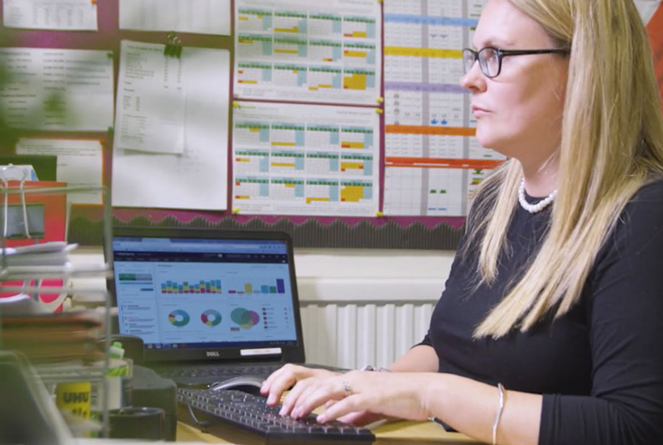Introduction
SENDCos, teachers, and senior leaders are always balancing priorities — from curriculum planning to classroom strategies — but one vital question remains: is your school’s SEND provision ready for the term ahead? Alongside the curriculum planning, working walls, classroom displays and playing the focus for INSET days, there is one vital question every leader should be asking:
How can I keep my school’s SEND provision on track all year round?
Ensuring high-quality, well-planned provision for pupils with SEND is not just about compliance – it’s about culture and getting it right for some of the most vulnerable learners from day one.
Maria Thomas, Juniper’s Training and Education Consultant who specialises in SEND in schools and safeguarding, has written this guide to help you review and reflect regularly on your SEND provision in school.
But before we dive in, let’s first look at what SEND means in schools.
What does SEND mean in schools?
SEND in schools stands for Special Educational Needs and Disabilities, referring to the support given to pupils who need extra help to access learning and achieve their full potential. SEND covers a broad range of needs — from difficulties with communication and learning to physical and emotional challenges. Effective SEND provision in schools ensures that every child receives the right support, resources, and adjustments to thrive in the classroom and beyond.
Strategic planning: start with the big picture
- The SEND register: following on from the final data drop, pupil progress meetings, transition days, information gathering, annual reviews and SEND support meetings, has the SEND register been updated to reflect current and new needs? As well as adding pupils, has consideration been given to pupils who may no longer need to be on the register?
- Transition support: Whether pupils are moving into your school, between years, or moving to secondary school, make sure files are ready to be shared and learning support plans are up to date. This information is key when a pupil with SEND is making any sort of transition, as the receiving teacher and/or school needs to ensure they have an accurate picture of a pupil’s current needs.
- Provision mapping: Does your whole school provision map reflect decisions made following the final assess, plan, do, review cycle and progress meetings? Have you mapped out which interventions will be required, staffing and timetabling? Have you communicated with staff which interventions will be completed in class and their responsibility around them, and which interventions will be run away from the classroom? Are your interventions evidence-based and cost-effective? Are your interventions short, sharp and regular, and is there a clear method of recording either quantitative or qualitative progress?
Staff training: All teachers are teachers of SEND
- All staff, whether they are a member of the senior leadership team, the SENDCo, class teacher or teaching assistant, have a role and responsibility to play when supporting pupils with SEND in school. This means as leaders, there is a responsibility in ensuring that staff have the knowledge, tools and resources to deliver the highest quality provision.
- CPD: Does your school development plan feed into your staff training plan? In addition to training on key SEND-specific areas, how does your other training put your most vulnerable learners at the heart of CPD? For example, when looking at teaching and learning, do you ensure staff understand what is meant by adaptive teaching and how to implement these strategies? Have staff received training in the ‘ordinarily available’ provision?
- Teaching Assistants: When considering TA deployment and making sure they are strategically placed, have their training needs been identified? What has this year’s monitoring told you, and what priorities have been identified? For example, are they clear on how to scaffold at the right level and enable pupil independence and resilience? Do teaching assistants place themselves in strategic positions in order to support the teacher in identifying which pupils require support?
- Class/year/phase teams: Training is strengthened by good communication. How do you ensure class teachers and teaching assistants have time together to discuss the week ahead? Do you give them time during assemblies or do contracts ensure there is time for this? In addition, what support and training have your staff received on collaborative working?
Pupil-centred support: putting the pupil at the heart of everything we do
- Pupil voice: In addition to completing whole-school pupil voice, have you ensured that pupil voice is featured in SEND and annual reviews? How has their voice been reflected in the plans for the upcoming year? Do their new class teachers know their hopes, worries and goals for the future?
- Pupil leadership and participation: Viewing the pupil holistically is key when supporting their personal development. Have you tracked representation on various school councils, extra-curricular activities, and clubs? Were any gaps identified, and do you understand the reasons behind them? Ensuring the representation of our most vulnerable cohorts on school councils helps us to understand everyone’s experience, supports all pupils to have their voice heard and gives them the opportunity to take part in decision-making. This is about feeling part of the whole-school community and knowing that their voice matters.
- Parent/carer partnership: Communication with parents and carers is essential. Following on from completed SEND reviews, have you shared the updated learning plans? Another way to ensure parents and carers feel part of the community is to share in advance key dates, such as SEND coffee mornings or any sort of parental workshop.
Environment and resources
- Accessible classrooms: Now that class teachers know who their pupils are going to be and they have started to get to know them. Have they considered the sensory needs of their new pupils and the physical layout? Are classrooms equipped with sensory toolboxes and have dedicated quiet spaces? If space is limited, have you considered using pop-up tents to provide those much-needed quiet spaces?
- Assistive technology: At the end of the academic year and in preparation for September has any technology used to support pupil access and learning been checked. This ensures its ready to go from day one.
Compliance and documentation: getting the paperwork right
- SEND information report: The SEND information report must be reviewed annually and updated to reflect how the school implements its SEND policy. Have you checked the link to the Local Offer still works? Does the SEND information report cover all key elements outlined in the SEND Code of Practice?
- EHCP reviews: Do you have a timeline of when annual reviews need to be completed by? Have you scheduled these? Has this provision been mapped out first to ensure that, as a school, you are meeting your statutory obligations? Do teachers understand the small steps and short-term targets required to meet the outcomes in a pupil’s EHCP?
- SEND learning plans: Following on from the final term’s reviews, have new targets been set as well as old ones reviewed? Have these key working documents been moderated to ensure they include all the information required by the school?
Conclusion
Maintaining your SEND provision in school does not mean having everything perfect, but it does mean being proactive, reflective, and responsive.It’s about making sure every pupil gets the support they need from the start, with systems in place to identify needs early and remove barriers to learning right away and continuing to do so throughout the academic year.


/Primary%20school%20.jpg?width=2000&name=Primary%20school%20.jpg)








.png?width=940&height=788&name=Lingfield%20College%20Case%20Study%20(5).png)
-1.png?width=1000&height=833&name=National%20Association%20of%20Head%20Teachers%20(3)-1.png)
-3.png?width=1080&height=1080&name=Untitled%20design%20(10)-3.png)





